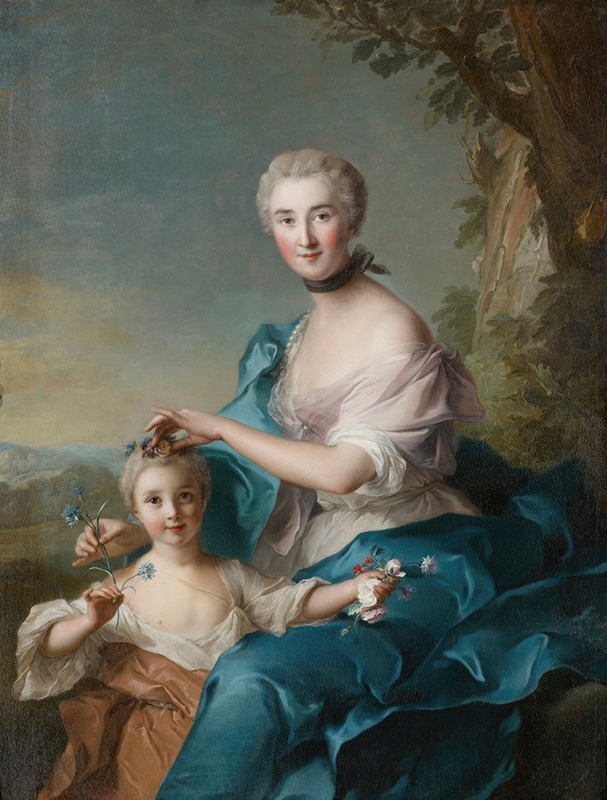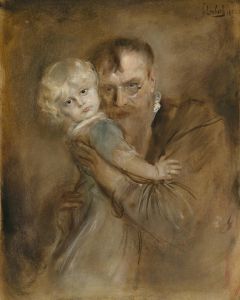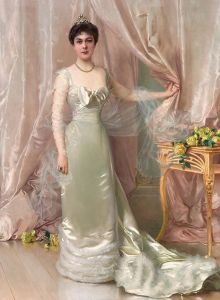
Portrait of Madame Crozat de Thiers and Her Daughter
A hand-painted replica of Jean-Marc Nattier’s masterpiece Portrait of Madame Crozat de Thiers and Her Daughter, meticulously crafted by professional artists to capture the true essence of the original. Each piece is created with museum-quality canvas and rare mineral pigments, carefully painted by experienced artists with delicate brushstrokes and rich, layered colors to perfectly recreate the texture of the original artwork. Unlike machine-printed reproductions, this hand-painted version brings the painting to life, infused with the artist’s emotions and skill in every stroke. Whether for personal collection or home decoration, it instantly elevates the artistic atmosphere of any space.
"Portrait of Madame Crozat de Thiers and Her Daughter" is a painting by the French Rococo artist Jean-Marc Nattier. Nattier, born in 1685 and died in 1766, was renowned for his portraits of the French aristocracy, often depicting his subjects in mythological or allegorical settings. This particular painting exemplifies his skill in capturing the elegance and grace of his sitters, as well as his adeptness in rendering luxurious fabrics and delicate features.
The painting portrays Madame Crozat de Thiers, a member of the prominent Crozat family, and her daughter. The Crozat family were notable art collectors and patrons in 18th-century France, with an extensive collection that included works by masters such as Raphael, Titian, and Veronese. Madame Crozat de Thiers, whose first name is not widely documented, was married into the Crozat family, which had amassed considerable wealth and influence through banking and trade.
In the portrait, Madame Crozat de Thiers is depicted seated, with her daughter standing beside her. Both figures are dressed in sumptuous garments typical of the Rococo period, characterized by their elaborate designs and rich fabrics. Nattier's use of soft, pastel colors and his attention to detail in the rendering of textures, such as the silk of the dresses and the delicate lace, highlight his mastery in portraiture.
The composition of the painting is carefully balanced, with Madame Crozat de Thiers positioned slightly to the left of the center, creating a sense of intimacy and connection between the mother and daughter. The background is kept relatively simple, ensuring that the focus remains on the figures. Nattier often employed such techniques to emphasize the personalities and social status of his subjects.
Jean-Marc Nattier's portraits were highly sought after during his lifetime, and he enjoyed the patronage of many members of the French nobility, including the royal family. His ability to flatter his sitters while maintaining a sense of realism made his works particularly appealing. "Portrait of Madame Crozat de Thiers and Her Daughter" is a testament to his skill and the high regard in which he was held by his contemporaries.
The painting is an excellent example of the Rococo style, which was characterized by its lightness, elegance, and use of curvilinear forms. This style was a reaction against the grandeur and strictness of the Baroque period, favoring instead a more playful and decorative approach. Nattier's work, including this portrait, embodies these qualities, making him one of the leading portraitists of his time.
Today, "Portrait of Madame Crozat de Thiers and Her Daughter" is appreciated not only for its artistic merit but also for its historical significance, offering a glimpse into the lives of the French aristocracy during the 18th century. The painting is part of a larger body of work that continues to be studied and admired for its contribution to the Rococo movement and its reflection of the social and cultural dynamics of the period.


















